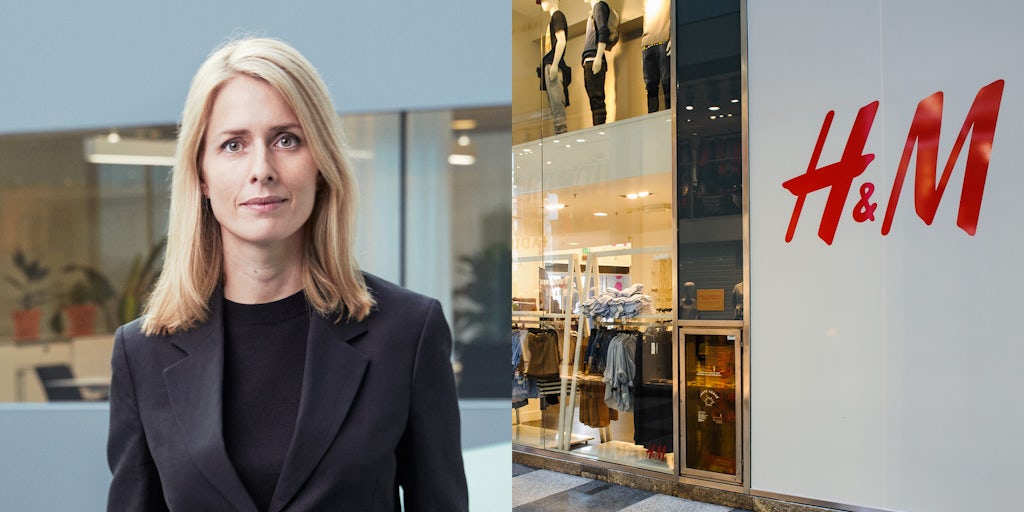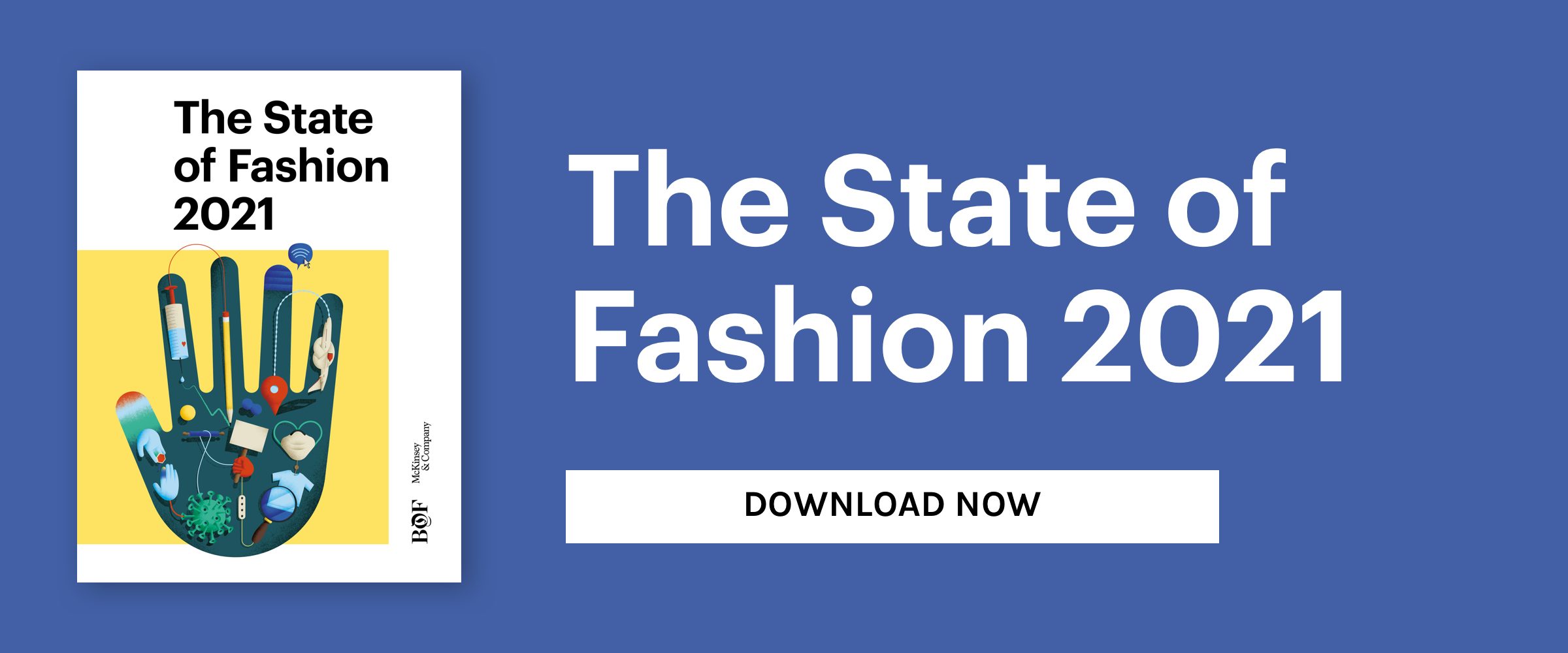H&M’s Helena Helmersson on Making Retail More Resilient | BoF Professional, News & Analysis
This article appeared first in The State of Fashion 2021, an in-depth report on the global fashion industry, co-published by BoF and McKinsey & Company. To learn more and download a copy of the report, click here.
When Helena Helmersson stepped into the top job at H&M Group in January 2020, fast fashion was already under pressure, facing disruption from ultra-fast digital native competitors and growing scrutiny for chasing unbridled growth amid a climate crisis. The pandemic forced leaders like Helmersson to find ways to adjust to the many disruptions and constraints that came with the crisis. Some retailers were forced into bankruptcy; others cancelled next season’s orders, leaving their suppliers in the lurch, even as pressure to answer for the social and environmental impact of business decisions continued to mount.
H&M was one of a few major retailers to pay garment suppliers for orders already produced or in progress. While Helmersson managed to return the group to profitability faster than expected, H&M’s future success will hinge on whether the company can finally crack omnichannel retail and scale up sustainable business models while still generating growth and profit.
BoF: There are so many things that have changed because of the coronavirus crisis. As you think about the future of the H&M Group in the context of the future of fashion and retail, which of the current changes do you think will become permanent changes?
Helena Helmersson: The most clear [change] is that customers that had not yet started to do their shopping online have now started to do so. We didn’t know [if] people [would] go back to their old behaviours, but what is now really clear when we re-open the stores [is that people] really want to meet us in both channels, physical stores and online. They want to do both. In the future probably there’s even more channels than our two main ones.
BoF: E-commerce efforts at H&M haven’t always been successful. What have you learned about how to make that model work in the future?
HH: The key is speed and flexibility. So, for example, to cope with a crisis like this we had to move a lot of garments between the channels, which sounds pretty basic, but it was a lot of work doing that with such big volumes. Also, it is about speed and flexibility when it comes to customer-facing [initiatives]. For example, if [customers] want to meet us online or in stores… we need to make sure that there is a customer experience that is integrated, in the sense that whether you choose to go to a store or online, it’s the same experience, and who we are as a brand should be really, really clear.
BoF: What’s your thinking now on store footprint and how that will have to adapt to this new environment? What will an optimised retail footprint for a brand like H&M look like going forward?
HH: We will have different formats when it comes to stores, depending on whether it’s a big city or a small city, and [we] will have to look at what kind of role a particular store contributes. For example, should it be a source of inspiration? Should it be an experience? Should it be part of the supply chain, or value chain, or should it be for families? Should it be for tourists? It’s about looking at the customers and their needs, like how should we work with local relevance, for example. I’m truly excited about pursuing that work. In some countries it will have to mean that we do more closures. In some countries it will be that we can keep on expanding because we don’t have the hubs that we want.
BoF: Before the pandemic you had around 5,000 stores in over 70 countries but now you’re projecting net store closures of around 250 stores. Historically, fashion brands tended to just open lots of stores because it was the one sure-fire way of growing revenue. When you’re shrinking the footprint, what will be the impact on your top line?
HH: We are in a transition period now. We come from a place where we used to only have our physical stores, and then we introduced online gradually. So, [as we] transition towards omni-channel, exactly what that means [for the] top line is very, very hard to predict. We have to make sure that we make the transition in a profitable and sustainable way so that in the long-term [we] can continue growing.
BoF: So as you consider the outlook for 2021, are you feeling confident that the business will return to growth vis-à-vis where we were before the crisis?
HH: It’s impossible to predict the growth. We’re going to continue growing, of course, but how fast will the customer traffic come back? I guess it’s as hard for me to predict as for you. That’s why we are working on changing our processes to become faster, to become more flexible… that’s what will make us come out of this even stronger. And from what we can see, especially in Europe, the demand for sustainable products and value-for-money products will be there to a greater extent.
It’s the system behind it that is broken, and that’s where I see that we have such a big responsibility to change it. The pace we’ve had the last decade cannot be the pace that we have in the coming decade.
BoF: Yes, but the most sceptical customers out there will say fast fashion and sustainability are inherently contradictory terms. You’re so passionate about sustainability, but you work in a company that creates millions and millions of garments every year. How do you reconcile that?
HH: I am so sad that we have let the word fast fashion become something negative. The fact that the younger generation want to dress themselves in a way that shows their personality and express themselves in different ways, that used to be something really beautiful. Now, because of the system behind it, it has become something that people talk about in a negative way. It’s the system behind it that is broken, and that’s where I see that we have such a big responsibility to change it. The pace we’ve had the last decade cannot be the pace that we have in the coming decade. We have to speed up changing the system [in terms of sustainability] so that people can continue to express themselves through fashion and design.
BoF: What are the main areas you are focusing on to change the system?
HH: One, produce what we can sell. That’s where you also need tech as an enabler to get to that point. Two, it’s about sustainable products, and of course, you want to make that circular. We really have to speed this up so that we get fibres back in the system again and again and again. Three, I think it’s about new revenue streams that are circular in themselves, or at least contributing to becoming climate-neutral, and then climate-positive, going towards the vision of becoming fully circular. You can look at rentals, remake and resell. We have to find quickly what can we scale up faster than others. And of course, you also need to make sure that it’s profitable, because otherwise it’s not sustainable. So how do you make sure you can scale it up and that after a while it can become profitable? Here it’s more on the big players to find new start-ups and new technologies, and be part of supporting that, because we have resources to do so.
BoF: The people who have been hit hardest by this crisis are garment workers in low-cost production countries like Bangladesh. What happens to these workers? You want to protect their jobs, but some of them are already out of work and they have nothing.
We have a joint responsibility to look at this holistically and understand that economic growth helps people, in the sense that it HH: can bring them out of poverty… It’s about building resilient systems in these markets. If I look at it in Sweden, you have a whole social protection network where if you lose your job you still have a system there to rely on, at least for a while until you find another job. In countries where there’s a lot of production, it’s not the same kind of system, so we have to work with governments and the ILO [International Labour Organization]. We have to work with unions so that workers always have a voice, and so that they can go to their employer to negotiate and to really have that kind of social dialogue that is so important and that they have someone to turn to. We have to [help] build social protection systems in those countries.
BoF: H&M has made commitments around living wages in the supply chain for a long time, but this is still not being achieved. What is getting in the way?
HH: First of all, what we have done has definitely made a difference. We see a positive tendency, but I couldn’t say that salaries are high enough. In a dream world, it would be fantastic if you could see more collective agreements, industry-wide agreements between employers, between workers, unions, governments, as there are in some parts of the world. It’s all about making industrial relations work in a better way. It takes a longer time, but what you’re building is a systemic change that will sustain. There are a lot of things that we do here and now, but in parallel with that it’s really important to collaborate with others to try to move the needle when it comes to the systems in those countries.
BoF: You mentioned some of the new models you’ve been experimenting with such as rental and resale. What are the early results from these and how do you take little experiments and actually make them big enough so that they have real impact?
HH: It’s challenging. That’s one of the parts that stresses me a bit with [our] circular vision and how to speed it up, because it’s quite easy to do smaller tests, but scaling it is what will actually have an impact. Our take has been to do a lot of things in parallel. We need to try rentals, try remake, and try resale. [But], we don’t have much time in [this] exploration phase. We need to have courage, we need to have more knowledge, and we simply need to find those ways going forward. If you look at the number of initiatives we are doing, it’s amazing, but to scale those up, that’s the nut we have to crack.
This interview has been edited and condensed.


